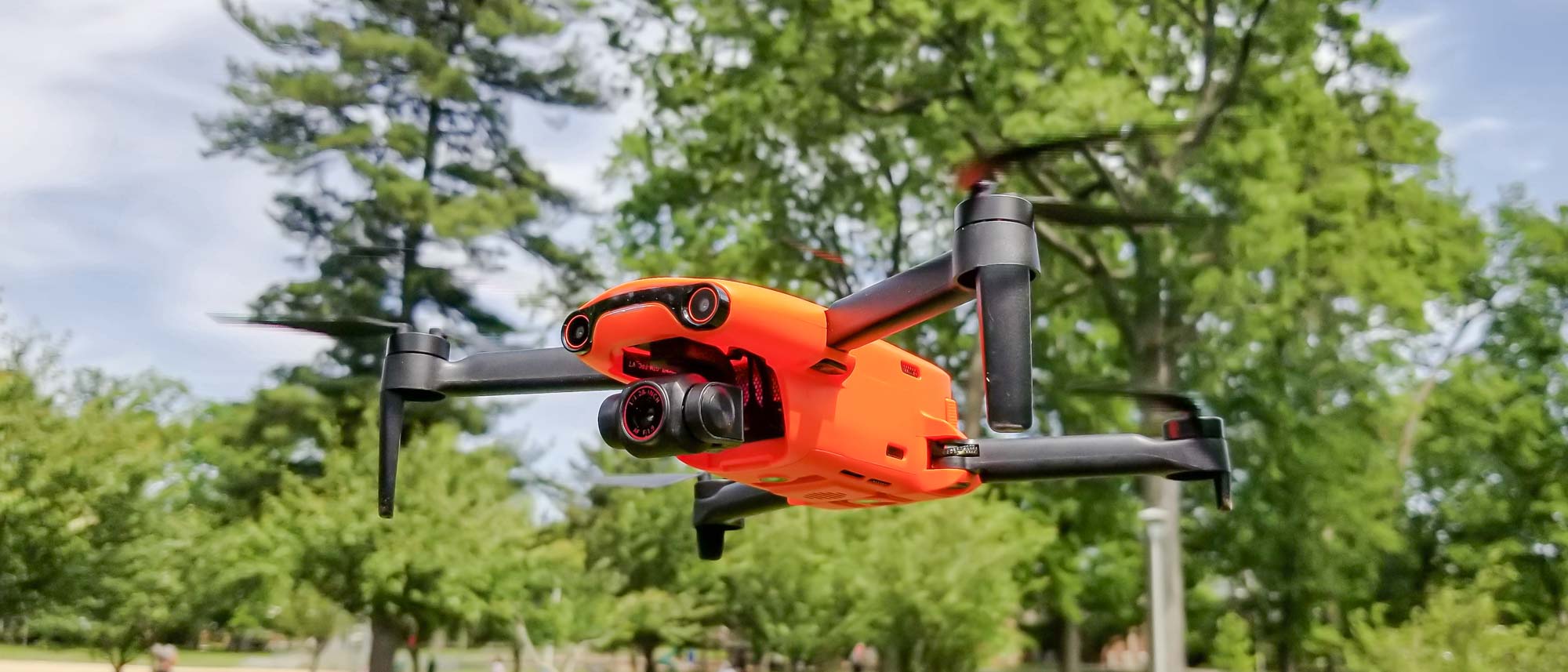Tom's Guide Verdict
The Autel Evo Nano+ is a great compact drone, but DJI’s models offer more for less.
Pros
- +
Comes in multiple colors
- +
Small and light
- +
Good video and photo quality
Cons
- -
More expensive than DJI Mini 3 Pro
Why you can trust Tom's Guide
Size (folded): 5.6 x 3.7 x 2.2 inches
Size (unfolded): 12.8 x 10.2 x 2.2 inches
Weight: 249 grams
Camera sensor: 1/1.28-inch CMOS, f/1.9 aperture
Field of view: 85 degrees
Max image size: 50MP
Max video resolution: 4K/60 fps
ISO range: 100-6400
Flight time: 28 minutes
While it may seem that every good camera drone is made by DJI, the Autel Evo Nano+ offers a strong alternative. Admittedly, it strongly resembles DJI’s mini drones in almost every way, from the design and shape of the drone to the app and all its features, but that's hardly a problem. After all, DJI makes some of the best drones around.
In reviewing the Autel Evo Nano+, I found it to be just as capable as similar DJI drones, but perhaps with just a bit less polish. However, you can get the Evo Nano+ in some fun colors, rather than the drab gray that’s uniform across all DJI drones. But is a different paint job enough to tempt you?
Autel Evo Nano+ review: Price and availability
The Autel Evo Nano+ has been available since late 2021; the standard bundle, which includes the drone, one battery, the controller, a set of rotors and the requisite cables, costs $949 through Autel, though it’s available for less on other online retailers. I found it on Amazon, for instance, for $899.
A premium bundle, which adds two more batteries, a charger, and a carrying case, costs $1,099. Additional batteries cost $65 each.
Unlike DJI’s drones, which are available in any color — as long as you choose gray — the Evo Nano comes in orange, gray, white, or red, which makes for a more colorful flight.
Autel Evo Nano+ review: Design
If you were to paint the Evo Nano+’s body a dull gray, you’d have a hard time distinguishing it from the DJI Mini 2. Both lilliputian drones have four arms that unfold from the main body, and a gimbal-mounted camera underneath a brow; two forward-facing obstacle-avoidance sensors give the drone a bug-like appearance.
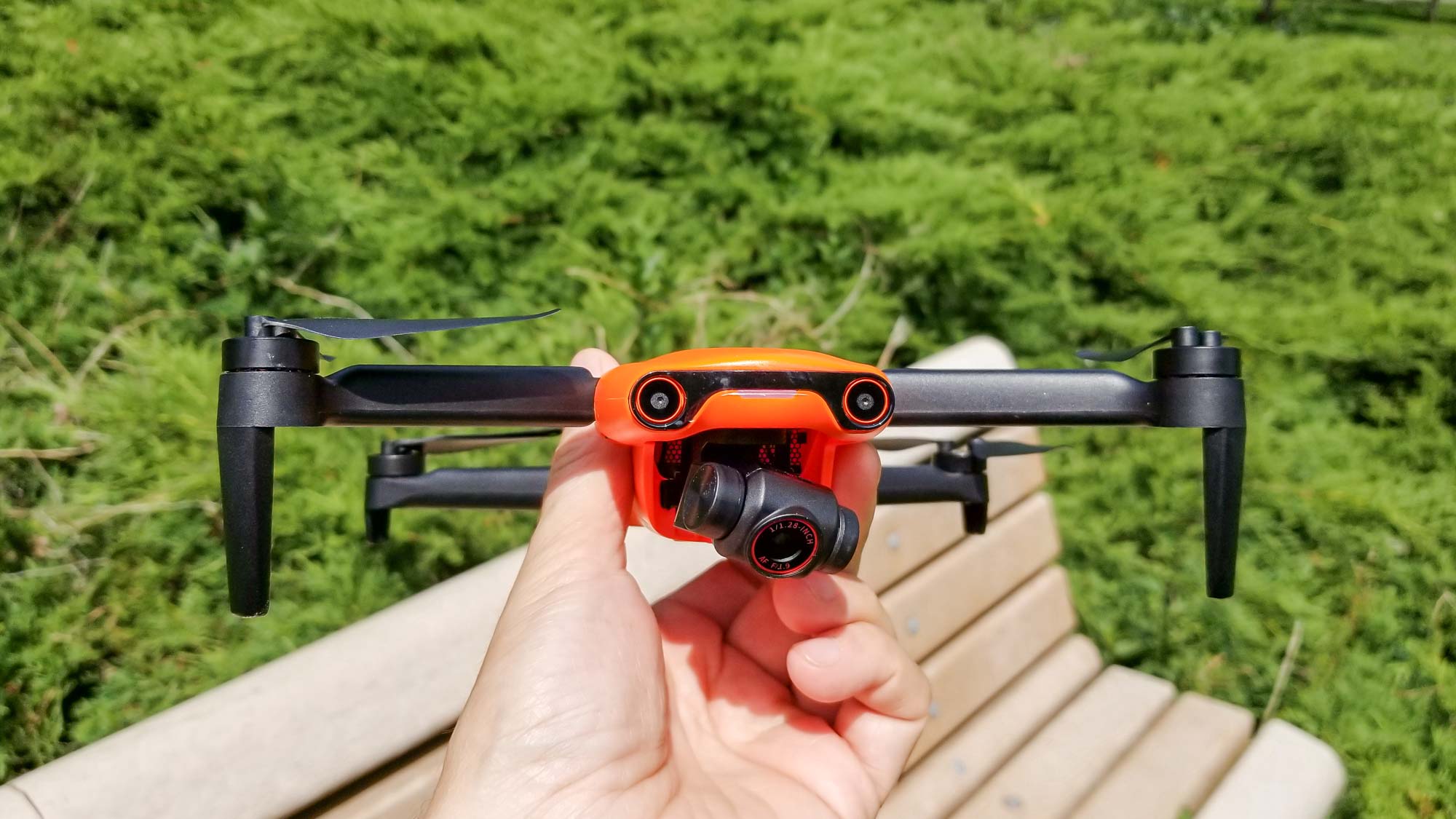
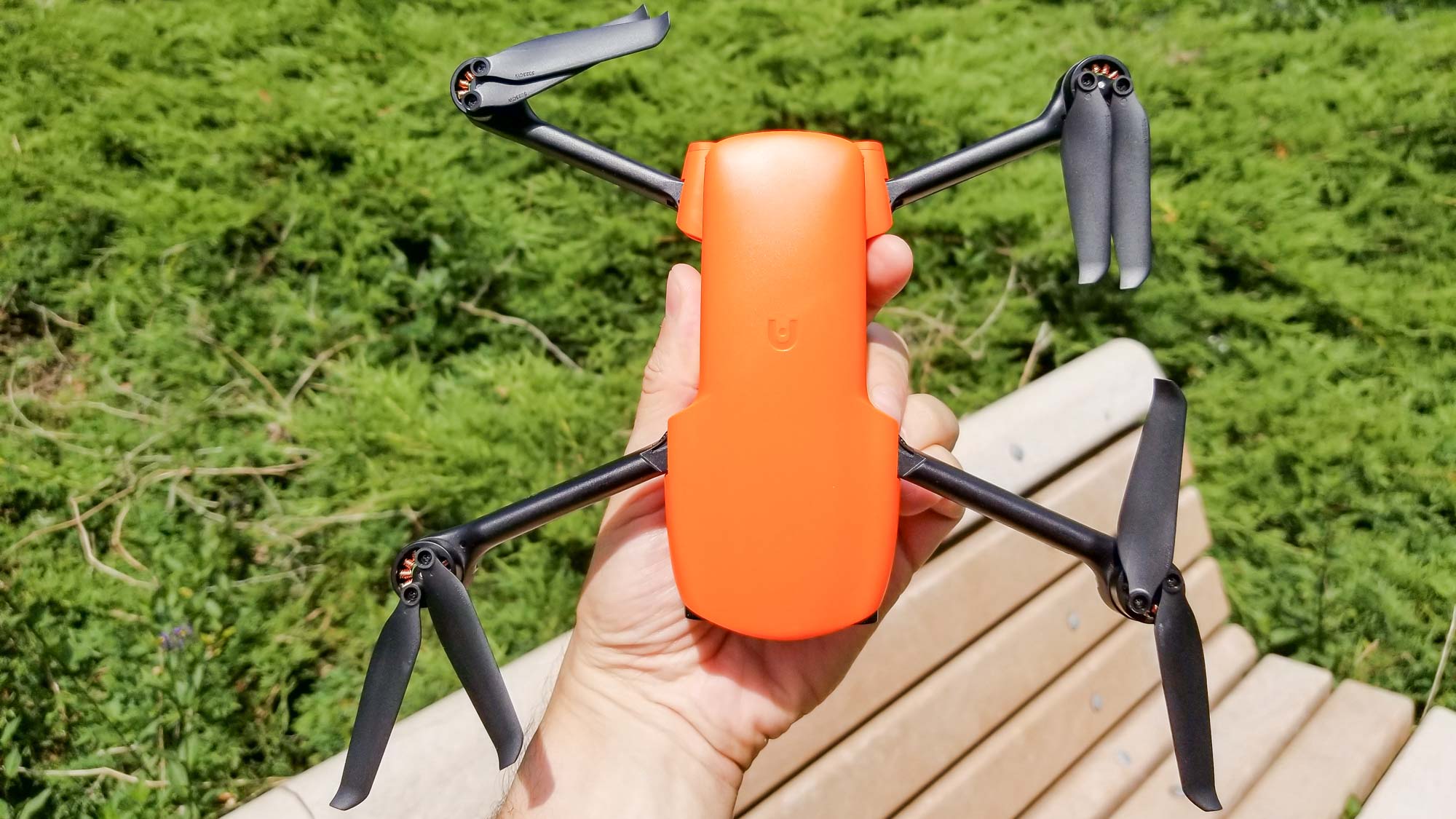
A battery slides into the rear of the drone; beneath this opening is a microSD card slot and a USB-C port to recharge the drone, as well as two rear-facing obstacle sensors. Two more obstacle avoidance sensors are on the bottom.
Get instant access to breaking news, the hottest reviews, great deals and helpful tips.
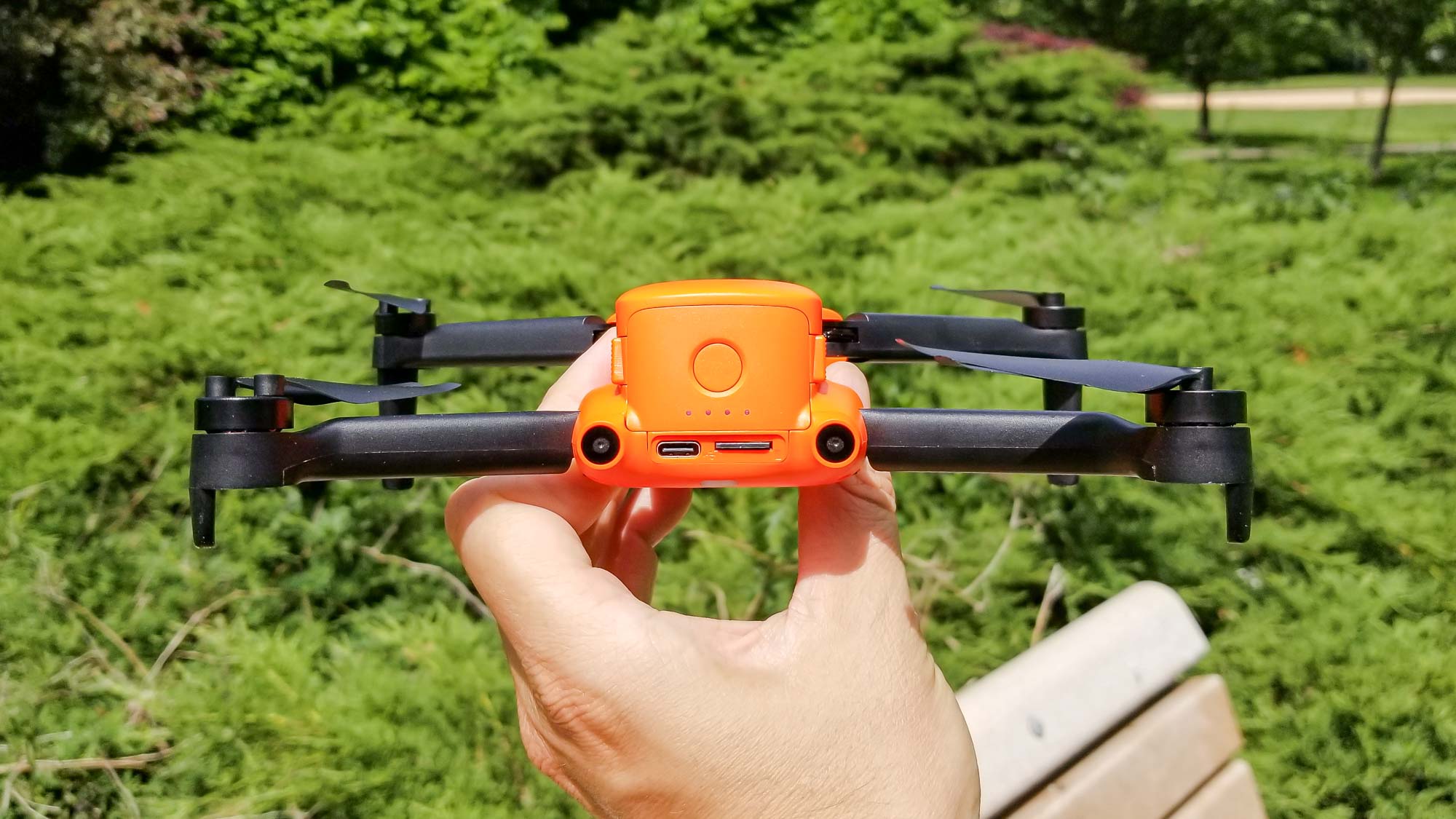

Like the Mini 2 and the newer DJI Mini 3 Pro, the Evo Nano+ weighs a scant 249 grams, which means you don’t have to register it with the FAA.

Autel’s all-black controller looks more like something you’d get with a PS5 than a drone. It has two joysticks with three buttons in between, as well as two additional shoulder buttons and a scroll wheel on the left front.
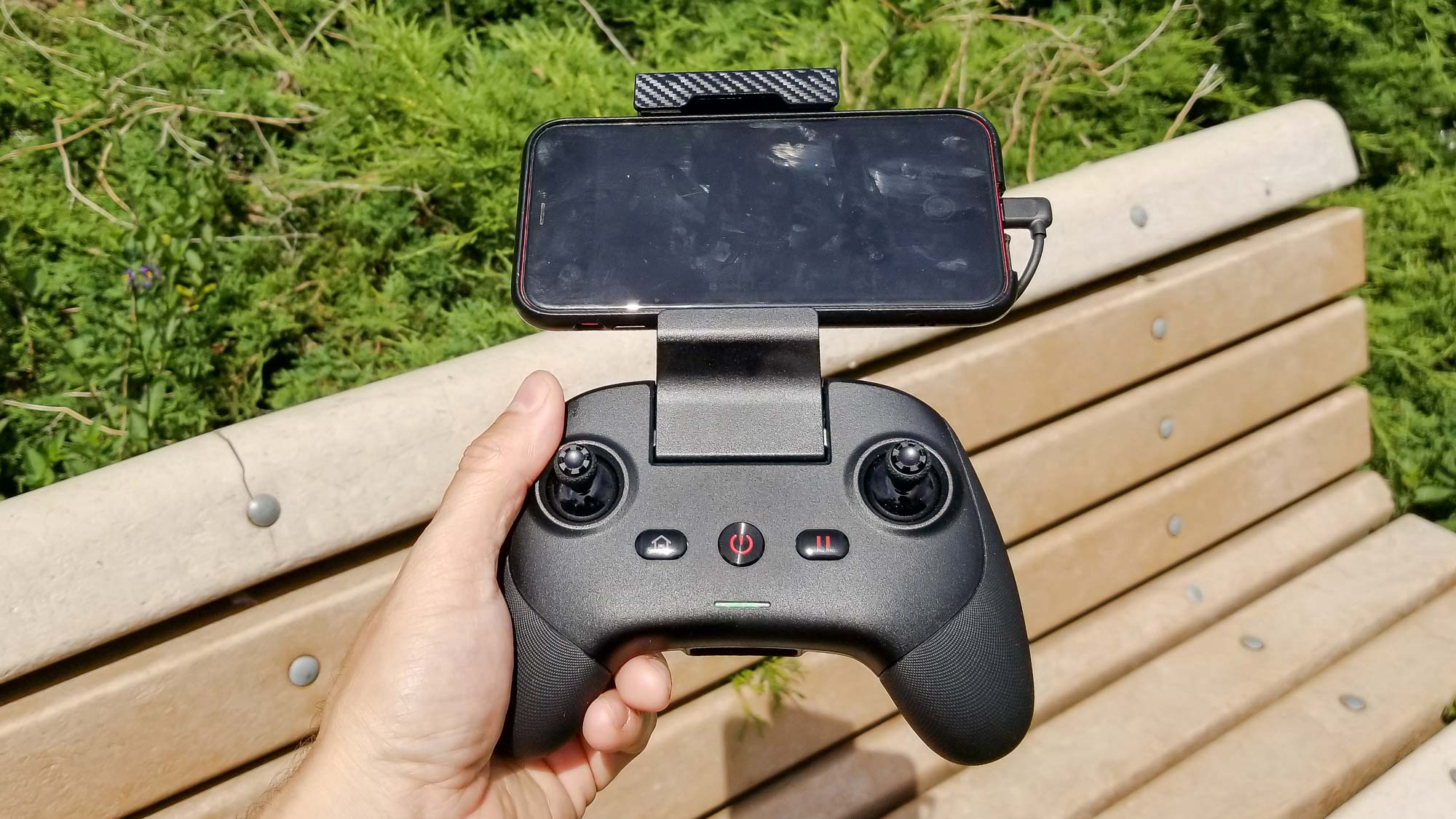
An extendable phone grip sticks out the front. I liked the grippiness of the controller, but it was surprisingly heavy, especially when my phone was attached.
Autel Evo Nano+ review: Camera and video quality
The Evo Nano+ has a 1/1.28-inch (0.8-inch) CMOS sensor with an aperture of f/1.9, and can take photos up to 50MP in size. That’s roughly analogous to the DJI Mini 3 Pro, which has a 1/1.3-inch sensor, f/1.7 aperture, and a max photo resolution of 48MP.

Photos and videos shot on the Nano+ were every bit as good as those I captured on comparable DJI drones. Images were crisp, sharp, and colorful. On bright sunny days, it was able to capture details in individual leaves, which were suitably lush and green. It slightly washed out a red shirt I was wearing — making it look orange in places — but otherwise colors were true.

A panoramic photo of the distant NYC skyline was also clear, despite a little bit of haze in the air. Predictably, the Nano+’s 4x digital zoom allowed me a closer look at the Empire State Building, but with a pretty significant loss of detail.


Also like the DJI Mini 3 Pro, the Evo Nano+ can lock onto and track people, and even has the same “quickshots,” preprogrammed modes where the drone flies autonomously while keeping the subject in the center of the frame.
I found the Nano+ did a good job of tracking me, but like a few other features, wasn’t quite as seamless an experience as with DJI’s drones — there was always a little hiccup here and there. For instance, on one flight, where the Nano+ was supposed to circle around me, it spiraled itself into the ground.
Autel Evo Nano+ review: Flight time
The Evo Nano+’s battery can keep the drone aloft for an estimated 28 minutes; I got pretty close to that in my testing, though wind and how fast you fly the drone will impact its flight time. In general, anything near half an hour is pretty good for a drone; the Mini 3 Pro lasts a couple of minutes longer using its regular battery. However, DJI also makes an extended battery for the Mini 3 Pro that increases its flight time to 47 minutes.
Autel Evo Nano+ review: Verdict
The Autel Evo Nano+ is a very good, very light, and very capable drone. However, the DJI Mini 3 Pro is an equally capable and equally light drone that costs $140 less. And, DJI’s drone can also take vertical video, which is a pretty neat trick. In practice, I also found that DJI’s drone felt just a bit more polished, from the app to its flight performance. (One thing that particularly drove me nuts: Autel’s app pronounces “gimbal” as “jimbal.”) But, if you can find the Evo Nano+ on sale, it’s a good alternative to DJI’s drones.

Michael A. Prospero is the U.S. Editor-in-Chief for Tom’s Guide. He oversees all evergreen content and oversees the Homes, Smart Home, and Fitness/Wearables categories for the site. In his spare time, he also tests out the latest drones, electric scooters, and smart home gadgets, such as video doorbells. Before his tenure at Tom's Guide, he was the Reviews Editor for Laptop Magazine, a reporter at Fast Company, the Times of Trenton, and, many eons back, an intern at George magazine. He received his undergraduate degree from Boston College, where he worked on the campus newspaper The Heights, and then attended the Columbia University school of Journalism. When he’s not testing out the latest running watch, electric scooter, or skiing or training for a marathon, he’s probably using the latest sous vide machine, smoker, or pizza oven, to the delight — or chagrin — of his family.
